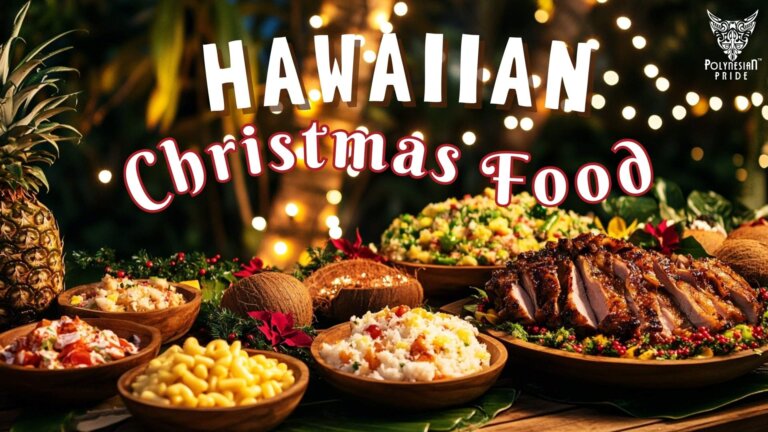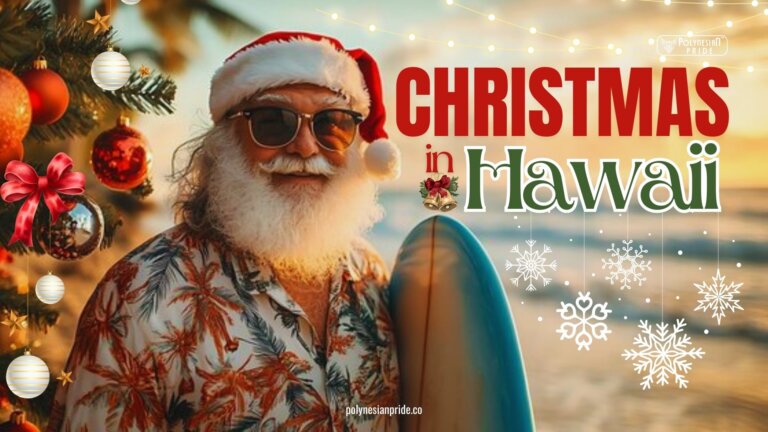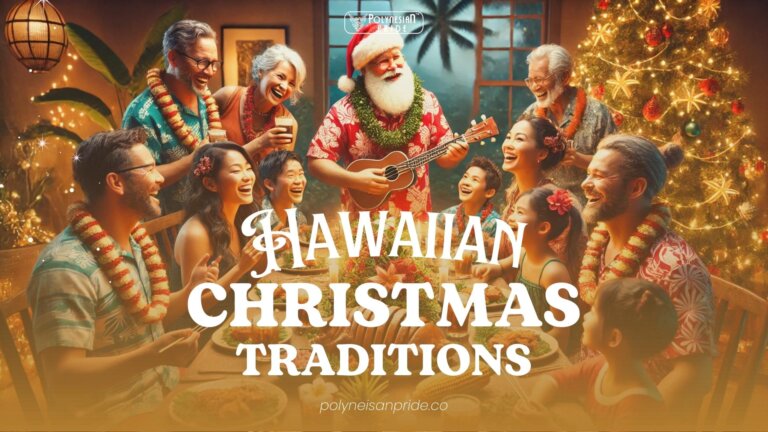Culture Of American Samoa: Amazed A Unique Civilization

INTRODUCTION
The culture of American Samoa boasts a vibrant cultural tapestry woven from ancient Polynesian traditions and modern influences. This enchanting destination offers a unique opportunity to immerse oneself in a way of life that harmoniously blends the richness of its past with the evolving present. From awe-inspiring landscapes to age-old customs, American Samoa invites you to explore a genuinely extraordinary cultural heritage.
Brief of American Samoa
Nestled in the South Pacific Ocean, American Samoa is a remote territory comprising five main islands and two coral atolls. Located approximately 2,600 miles southwest of Hawaii, it boasts a strategic position in the Polynesian region. The largest island, Tutuila, is home to the capital city of Pago Pago, a bustling hub of commerce and culture.
Despite its small size, American Samoa boasts a diverse population of around 60,000, predominantly of Samoan descent. The indigenous culture of American Samoa thrives here, characterized by strong family ties, communal living, and reverence for nature.
The Beginning of The Culture of American Samoa

The history of American Samoa is a captivating tapestry woven from the threads of ancient Polynesian voyagers and the influence of Western explorers. This rich heritage has shaped the unique cultural identity that American Samoans proudly embrace today.
Arrival of Polynesian Voyagers
American Samoa’s history is deeply intertwined with the broader Polynesian narrative. The islands were first colonized between 500 and 800 BC by the Lapita people, whose origins can be traced back to Indo-Malaysia. Over time, this ancient settlement evolved into the distinct Polynesian culture that flourished in Samoa and Tonga.
European Explore American Samoa
The first European contact with the Samoan islands occurred in 1722, when Dutch explorer Jacob Roggeveen stumbled upon these remote lands, aptly naming them the Navigator Islands due to the inhabitants’ skilled maritime prowess. However, it was the arrival of Christian missionaries in 1828 that profoundly transformed Samoan culture, introducing European practices and paving the way for the eventual partitioning of the islands between the United States and Germany in the late 19th century.
Culture Of American Samoa During World War II

Nevington War Museum
Following World War II, Western Samoa became a League of Nations Trust Territory under New Zealand’s administration, eventually gaining independence in 1962. Meanwhile, American Samoa was ceded to the United States in 1899, becoming an unincorporated territory.
As Samoan immigration to countries like New Zealand, Australia, and the United States increased in the 1950s, the process of acculturation and assimilation began to unfold. Samoan Americans have made remarkable contributions to various fields, including the military, athletics, politics, and more. Nevertheless, challenges such as low-paying jobs, reliance on government programs, and prejudices have persisted.
Core Values of the Culture of American Samoa
Core Values
Family (Aiga): The aiga is indeed the fundamental unit of social organization in the culture of American Samoa. Each family has a Matai (chief) or Sa’o (leader) who is responsible for the family’s welfare, managing communal resources, and representing the family in village councils. The Matai system is central to the structure of American Samoan society.
Service (Tautua): Service to the extended family, or tautua, is a core aspect of American Samoan life. Family members are expected to contribute to the well-being and functioning of the aiga, reflecting a strong sense of duty and loyalty.
Respect (Fa’aaloalo): Respect is a deeply ingrained value in American Samoan social relations. Fa’aaloalo encompasses respect for elders, Matai, and others in the community, ensuring harmony and proper conduct within society.
Love (Alofa): Alofa, or love, is a value taught from a young age in the culture of American Samoa. It signifies affection, compassion, and care within the family and community, fostering strong emotional bonds.
Hospitality: American Samoans are renowned for their friendliness and welcoming nature. Hospitality is a crucial aspect of the culture, with an emphasis on cooperation and consensus. Guests are treated with great respect and generosity.
Food: Food plays a central role in Samoan cultural events and daily life. Feasts are shared, often featuring local cuisine made with coconut milk and cream. Meals are communal activities that bring families and communities together.

Courtship and Marriage Customs
Traditional Samoan courtship involves the young man presenting gifts and food to the young woman’s family, demonstrating his ability to provide for a future household. Physical contact between the sexes in public is generally frowned upon, though these practices are gradually changing as the culture of American Samoa becomes more Westernized.
Marriage was less common before the arrival of Christianity, with many couples choosing to live together and raise children without formal unions. Illegitimacy is not viewed negatively, and extended family members or close friends often raise children. Boys and girls in American Samoa are raised in the same way until puberty, at which point cultural taboos restrict their association.
Religion in the Culture of American Samoa
Religion plays a pivotal role in American Samoa, deeply intertwined with cultural identity and traditions. The predominantly Christian population embraces various denominations, each contributing to a rich tapestry of spiritual beliefs and practices.

Prominent Christian Denominations
The majority of American Samoans identify as Christians, with the following denominations being the most prominent:
- Congregational Christian Church: The largest denomination in American Samoa, rooted in the 19th-century arrival of the London Missionary Society.
- Methodist: Introduced in the late 19th century, Methodism has had a significant influence on the islands.
- Catholic: The Catholic faith has a substantial following, with churches and missions established by early European missionaries.
- Latter-day Saints (Mormon): The Church of Jesus Christ of Latter-day Saints has a growing presence in American Samoa.
Importance of Faith in Daily Life
Faith is deeply woven into the fabric of American Samoan society. Church services are a central part of the weekly routine, and faith-based organizations play a crucial role in community development and social welfare.
Religious Beliefs and Values
The religious beliefs of American Samoans instill values such as kindness, compassion, respect for others, and a strong sense of community. These values guide interpersonal relationships, family dynamics, and societal interactions.
Blending of Traditions
While Christianity is the predominant religion, traditional Samoan beliefs and practices have been seamlessly integrated into modern religious observances. This blending of traditions reflects the adaptability and resilience of the culture of American Samoa.
Culinary Culture of American Samoa
The culinary culture of American Samoa is a delightful reflection of the islands’ rich natural bounty and cultural heritage. From savory dishes bursting with flavors to refreshing tropical beverages, the cuisine of American Samoa is a feast for the senses.
Key Ingredients and Staples
The culture of American Samoa cuisine relies heavily on locally sourced ingredients, including:
Taro: A starchy root vegetable that is a staple in many dishes.
Breadfruit: A versatile and nutritious fruit used in a variety of preparations.
Coconut: Coconut milk and grated coconut are essential components in many Samoan dishes.
Seafood: Fresh fish, octopus, crab, and shellfish are abundant in the island’s waters.
Traditional Dishes
Palusami: is a traditional Samoan dish made with young taro leaves, coconut milk, and often onions and meat (such as corned beef) baked until tender.
Faasu: This is a roasted dish featuring various seafood options like octopus, crab, and shellfish, cooked over hot stones and wrapped in banana leaves. (Note: This dish is more commonly known as ‘umu’ preparation rather than faasu, which may refer to different dishes.)
‘Otai: A refreshing and vibrant fruit drink made with coconut milk, fresh fruit such as watermelon or pineapple, and a hint of lime juice. (Note: ‘Otai is more closely associated with Tongan cuisine but is enjoyed in American Samoan households as well.)

Cultural Significance
Food holds deep cultural significance in American Samoa, reflecting the rich culture of American Samoa. It serves as a means of celebration, hospitality, and connection. Sharing meals with family and friends is a cherished tradition, fostering bonds and strengthening community ties.
Music and Dance Culture of American Samoa
Music and dance are integral components of the culture of American Samoa, serving as vibrant expressions of heritage, storytelling, and community unity. From rhythmic drumbeats to graceful movements, the music and dance traditions of American Samoa captivate audiences and embody the spirit of the islands.
Traditional Instruments
Traditional musical instruments play a central role in American Samoan music, adding depth and rhythm to performances:
Pate: A wooden slit drum that produces deep, resonant tones used to set the beat and rhythm of traditional dances.
Fala: Woven mats that are beaten or struck to create percussive sounds, enhancing the musical accompaniment of dance performances.
Lali: Large wooden drums that are struck with mallets to produce powerful beats, signaling essential events and gatherings in the community.
Siva: The Art of Dance
“Siva” is the traditional dance form of American Samoa, characterized by graceful movements, expressive gestures, and intricate footwork. Dancers convey stories of love, nature, and daily life through their performances, embodying the cultural narratives of the islands.

Mele: Songs of the Islands
“Mele” refers to the songs of American Samoa, ranging from lively chants to soulful ballads. These songs are often accompanied by traditional instruments and serve as a means of preserving oral history, passing down legends and tales from generation to generation.
Celebratory Performances
Music and dance play a central role in celebratory events and gatherings in American Samoa. Whether it’s a village fiafia, a wedding ceremony, or a cultural festival, performances filled with music and dance bring communities together in joyous revelry.
Contemporary Expressions
While traditional music and dance continue to thrive in American Samoa, contemporary expressions have also emerged, reflecting the dynamic evolution of the culture of American Samoa.
Fusion Music: Samoan musicians blend traditional rhythms with reggae, hip-hop, jazz, and rock, creating a unique sound that appeals to younger generations. Artists like Tenelle and J Boog exemplify this fusion.
Dance Innovations: Contemporary dance combines traditional siva with hip-hop, ballet, and modern choreography. Performances at festivals and competitions showcase this creative blend.
Visual Arts: Samoan artists explore themes of identity, environmental conservation, and cultural resilience through painting, sculpture, and digital art, merging traditional motifs with modern techniques.

Costume Culture of American Samoa
American Samoa is an enchanting archipelago in the South Pacific Ocean, lying just below the equator. This location gives the islands a tropical climate with high humidity and warmth year-round, making light and breathable clothing essential.
Daily Costume
Lavalava (Ie)
The lavalava is a distinctive item of both American Samoa and Samoan cultural clothing, often mistaken for towels, skirts, or sarongs.
This versatile fabric tied around the waist is essential in daily life, worn by both men and women at home while sleeping, running errands, and in public. The lavalava symbolizes comfort and practicality and is worn by people of all ages and genders for various activities. Its widespread use highlights its cultural significance and functionality.
During social gatherings, women wear lavalavas over their regular clothes while preparing and serving food. This practice shows respect to guests and elders, reflecting the culture of American Samoa and its values of hospitality and familial respect.

Formal Occasions
Puletasi for Women

For formal occasions such as church services, celebrations, and gatherings, American Samoan women wear puletasi. These elegant, two-piece dresses have a bottom piece resembling a lavalava but extending to the ankles. The bottom is tied at the waist and worn under the top garment, which typically fits like a blouse and is often zipped up at the back.
Puletasi come in various designs, colors, and styles, reflecting the individual tastes of the women who wear them. The most common footwear with puletasis is flip-flops, and women wear their hair up. However, this practice has become more relaxed over time.

Ie Faitaga for Men
Ie faitaga is traditional attire for American Samoan men, similar to lavalava (ie) but made from thicker fabric. Tied at the waist, men typically tuck in their button-up shirts, whether long or short-sleeved, into their ie faitaga. These garments are usually solid-colored, and the traditional outfit is often completed with a tie and flip-flops.
Cultural Significance
Traditional costumes play a significant role in the culture of American Samoa, serving as a vibrant expression of identity and heritage. They embody the island’s history and traditions, reinforcing the cultural bonds within the community and preserving the rich legacy of the culture of American Samoa.
Art and Crafts Culture of American Samoa
Siapo: or tapa cloth, is a traditional Samoan art crafted from the inner bark of the mulberry tree. Artisans meticulously pound, dye, and stencil the bark to create intricate designs used in clothing, décor, and ceremonial items.
Fine Mat Weaving is a revered art form in American Samoa, where artisans skillfully weave pandanus leaves into mats adorned with geometric patterns and cultural symbols. These mats symbolize wealth, status, and cultural identity and are often exchanged as gifts during special occasions.
Woodcarving Traditions: Woodcarving holds a prominent place in American Samoan art, with artisans using native woods like ironwood and coconut palm to create sculptures, bowls, and implements. These pieces feature symbolic motifs that reflect Samoan mythology, spirituality, and ancestral connections.
Tatau Tattooing: known as tatau, is a respected form of artistic expression in American Samoa. Intricate designs inked by “tufuga ta tatau” artists convey personal stories, tribal affiliations, and rites of passage, embodying deep cultural significance.

Modern Art Scene
In addition to traditional art forms, American Samoa boasts a vibrant contemporary art scene blending Indigenous aesthetics with modern influences. Local artists explore themes of identity, environmental conservation, and cultural resilience through painting, sculpture, and mixed media, enriching the island’s artistic tapestry.
Language and Culture of American Samoa
Language serves as a vital conduit for preserving cultural heritage, fostering interpersonal relationships, and expressing identity in American Samoa. The Samoan language, with its rich oral tradition and nuanced linguistic nuances, reflects the values, beliefs, and worldview of the American Samoans.
Samoan Language
The Samoan language is a Polynesian tongue renowned for its melodic cadence, poetic imagery, and complex social hierarchies embedded within its structure. It is the official language of American Samoa, besides English. Samoan is spoken in homes, schools, churches, and community settings, serving as a unifying force among its speakers.
Oral Tradition
Oral tradition plays a crucial role in the preservation and dissemination of knowledge in the culture of American Samoa. Through storytelling, songs, chants, oratory, historical narratives, myths, and genealogies are passed down from generation to generation, enriching the collective memory of the Samoan people.

Respectful Communication
Principles of respect, humility, and attentiveness mark communication in American Samoan culture. Politeness and deference are valued traits, with individuals using formal language and gestures to show deference to elders, chiefs, and authority figures. Listening attentively and speaking with clarity are essential aspects of effective communication.
Nonverbal Communication
Nonverbal communication plays a significant role in American Samoan interactions, conveying meaning through gestures, facial expressions, and body language. Eye contact, posture, and physical proximity communicate respect, interest, and emotional states, enhancing the nuances of verbal exchanges.
American Samoan Rhetoric and Oratory
Eloquent oratory is a prestigious position in the culture of American Samoa, and orators are highly respected individuals. To excel in this art, orators must possess a deep knowledge of history, proverbs, and genealogies and be well-spoken. Samoan rhetoric is complex and sophisticated, often referencing ancient events, sayings, and biblical teachings.
Modern Culture of American Samoa
Media and Communication
American Samoa features a local TV station broadcasting U.S. and regional programs. At the same time, Western Samoa recently established its TV production facility. Both countries operate multiple radio stations that serve as platforms for local voices and cultural expression.
Cultural Centers and Associations
The Polynesian Cultural Center in Laie, Hawaii, is dedicated to preserving and celebrating the cultural heritage of Polynesian communities, including the culture of American Samoa. Numerous organizations support the Samoan community locally and internationally.
Museums and Research Institutions
Globally, many museums and libraries house collections of Samoan artifacts, providing resources for researchers and enthusiasts interested in Samoan culture. Academic institutions play pivotal roles in advancing the study of Samoan history, traditions, and contemporary experiences.

Youth Migration and Urbanization
The trend of youth migrating from rural villages to urban centers and abroad is impacting the traditional social structure of American Samoa. This shift can lead to generational disconnection, challenges in preserving cultural practices, and changes in community dynamics.
Cultural Integrity and Representation
Concerns over cultural appropriation and misrepresentation arise as Samoan cultural symbols and practices become commercialized. Protecting intellectual property rights and promoting authentic representations are crucial for upholding Samoan heritage.
Educational Empowerment
Empowering future generations in American Samoa involves enhancing educational opportunities, promoting cultural literacy, and revitalizing indigenous knowledge systems. Strengthening educational curricula and supporting language revitalization initiatives are critical steps toward nurturing Samoan identity and agency.
CONCLUSION
In conclusion, the tapestry of the culture of American Samoa is woven with threads of tradition, resilience, and adaptation. From the ancient practices of tatau and Fa’a Samoa to the vibrant expressions of music, dance, and art, American Samoan culture embodies a rich legacy of heritage and innovation. As the islands grapple with contemporary challenges and opportunities, the enduring values of community, family, and language continue to anchor the American Samoan people in their journey toward a sustainable and culturally vibrant future. By honoring the past, embracing the present, and envisioning the possibilities ahead, American Samoa stands poised to navigate the currents of change while staying true to the essence of its unique cultural identity.
FAQs
What makes the culture of American Samoa unique?
The culture of American Samoa is unique due to its blend of ancient Polynesian traditions, communal solid values, and resilience in the face of modernization. The preservation of traditional practices such as tattooing, dance, and communal feasting sets it apart from other Pacific islands.
How do American Samoans celebrate important milestones and events?
American Samoans celebrate important milestones and events with elaborate ceremonies and rituals that reflect their cultural heritage. Births, weddings, and funerals are marked by traditional dances, feasting, and the exchange of gifts, emphasizing the importance of family and community.
What role does religion play in American Samoan society?
Religion holds a significant place in American Samoan society, with Christianity, particularly the Congregational Christian Church of American Samoa (CCCAS), being the dominant faith. Church services and prayer meetings are central to community life, providing spiritual guidance and a sense of unity among residents.
How can I learn more about the culture of American Samoa before visiting?
Before visiting American Samoa, you can learn more about the culture through books, documentaries, online resources, and cultural exchange programs. Engaging with local communities and organizations can also provide valuable insights into the customs, traditions, and way of life in American Samoa.

I am Leilani Miller – I research focusing on Vanuatu – volcanic landscapes, blue holes, coral reefs & rainforests. I have over five years of experience researching and sharing insights on tourism and environmental activism. Explore and experience without limits through my latest article.
Contact information:
Email: [email protected]
Tel: +1 (808) 555-1528






